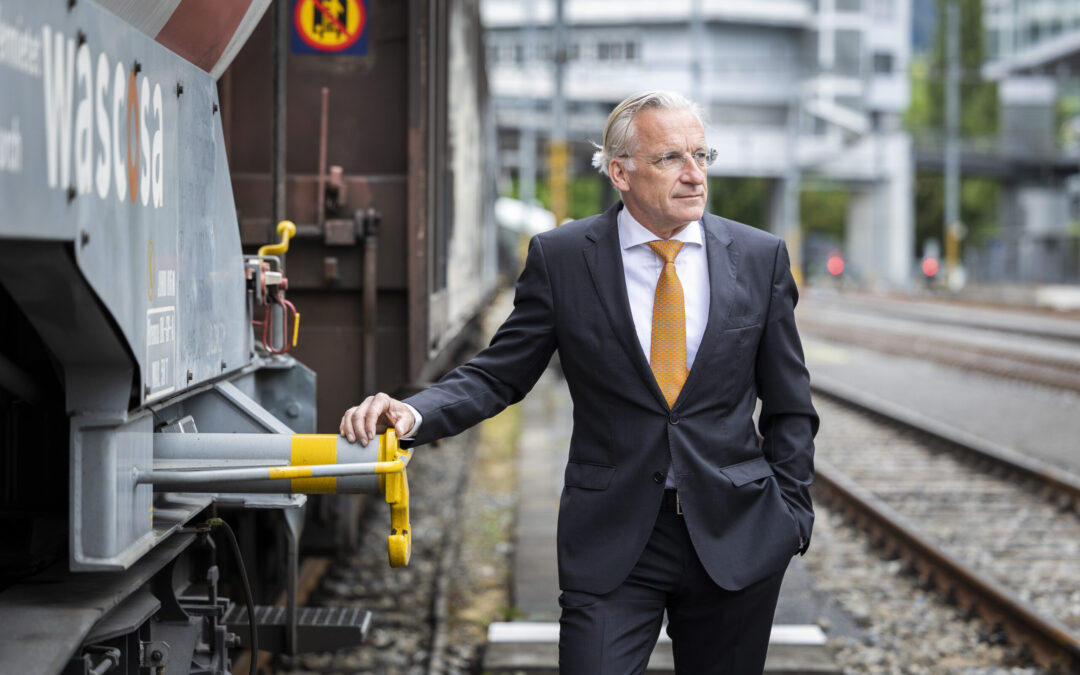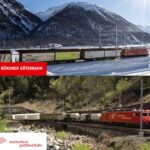In June 2022, the takeover of the family business WASCOSA by Swiss Life and Vauban was announced. We wanted to know more about the background to this sale and the vision of WASCOSA from the former owner and future Chairman of the Board of Directors Philipp Müller.
Mr Müller, the news of the sale of your successful family business came as a surprise. What will change?
Philipp Müller: Less than you might think at first glance. With this step we have secured the future of WASCOSA. Of course there will be a change from a family-run to an investment-driven company. But the spirit of WASCOSA will remain. We want to continue to act faster and better than others, to be successful as a team and to put customers’ interests before our own. These goals are demanding, but doable.
What prompted you to take this step?
The succession plan and securing the future of the company. Neither of our children was interested in succeeding me. So we had to find an external solution to this question. Eight years ago, we had already hired a CEO from outside the family, Peter Balzer. In addition, our market is currently undergoing an enormous shakeout. Of the ten largest car rental companies in Europe, we are the only ones who have not experienced a merger or takeover. Those who are still in the game are constantly getting bigger, making major long-term investments and taking high financial risks. We simply needed more financial strength for WASCOSA to be able to survive as an SME in this market. We found these strong financial partners in Swiss Life and Vauban.
What other solutions were on the table?
At first we considered a minority shareholding by third-party shareholders. However, this did not result in an optimal solution for the parties involved. Selling to a competitor was never on the table. In the end, long-term cooperation with a strong financial partner proved to be the most sustainable.
«WASCOSA has established itself from a small, unknown rental company to a successful supplier of freight car systems throughout Europe through innovation, customer proximity and agility.»
What experiences from the past will shape the future of the company?
WASCOSA has established itself from a small, unknown rental company to a successful provider of freight car systems throughout Europe through innovation, customer proximity and agility. We want to maintain this latter position. One example of our innovative strength: there is currently a strong trend towards modular freight car concepts. We introduced such concepts 15 years ago. Now that the trend is catching on, we are ready for the market. In the last 60 years of our company, an uncompromising customer orientation has made the difference in our daily business. We want to keep it that way too. It is in the interest of the new owners that WASCOSA remains at its core what it has always been: an innovative and customer-oriented company.
How will you master this change process?
The participation of Swiss Life and Vauban as third-party shareholders was derived from an intensive strategy process with around 15 employees. After the decision was made, we introduced the new shareholders to the company at a one-day event. Throughout the entire strategy process, we wanted to avoid uncertainty, mistrust and false assumptions on the part of management and employees. We succeeded in doing so, and we are doing everything we can to ensure that we also succeed under the new ownership. CEO Peter Balzer and I will still be on the Board of Directors. This is a strong message with regard to continuity and the future of WASCOSA.
«The DAC is a key project with enormous potential to move freight wagon transport forward.»
Where do you see the most urgent need for action in rail freight transport?
There are different starting points. We need sufficient capacities on the network, i.e. more train paths. In addition, country-specific obstacles should be removed. And finally, rail freight transport is dependent on targeted financial support to get innovations rolling, for example the digital automatic coupling (DAC).
Speaking of DAC: what do you think about it?
It is a key project with enormous potential to move freight wagon transport forward. However, we have little influence on this highly political topic. We have been working on the electrification of freight wagons for several years. Here, of course, the DAC gives us an additional boost.
Is the real added value of the DAC recognised by the industry?
Our industry is not too keen on innovation and also not very future-oriented. The automation of coupling by the DAC has arrived. I am not so sure about its potential for digitalisation. As always, it probably first needs someone to lead the way and make the efficiency gains clear.
You have been involved in the VAP’s Executive Committee (GLA) for years. How do you describe the work of the VAP?
The VAP is characterised by a high level of competence and a pleasant working relationship. The association’s activities are driven by the cause and not by the ego of individuals. The VAP is the leader in some areas. This is shown by the high level of participation at home and abroad in events such as the forums. This interest proves that the VAP takes up political, economic or legal issues proactively and constructively. I found the get-together at the GLA very positive. In the dialogue with SBB, the association shows staying power. Here, passenger transport comes first, then infrastructure, then real estate and only then rail freight. That makes it all the more important to keep at it. The patience and constant cooperation of Frank Furrer’s team stand out.
What strengths do you attribute to the VAP?
One of its main strengths is the large number of shippers among its members. The VAP networks all the players in freight transport. In addition, it offers the shippers’ industry a highly interesting and relevant platform. I think that you can only make successful policy if you represent all interests.
How has the VAP supported you and your WASCOSA?
We have had very good experiences with the VAP. It has even supported us competently and successfully all the way to the Federal Court.
What else would you like to see from the VAP?
That it becomes more visible in the media. The VAP could appear more prominently as an opinion-leading expert on rail transport and thus increase its public profile, just like the TCS or ASTAG.
To whom would you recommend cooperation with the VAP?
Everyone who is interested in rail freight transport. I am thinking above all of associations from other modes of transport. For a long time now it has no longer been just about rail versus road, but about sensible multimodal co-existence.
What has not yet come up in this conversation?
The topic of sustainability. Rail freight transport is one of the most important drivers and carriers of sustainable transport. Incidentally, this was also one of the reasons why I took over from my father-in-law at WASCOSA 30 years ago.



